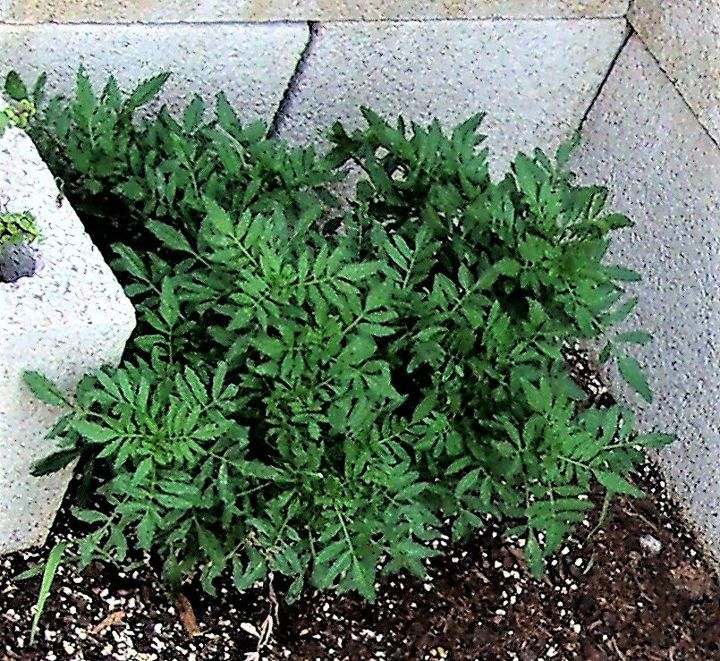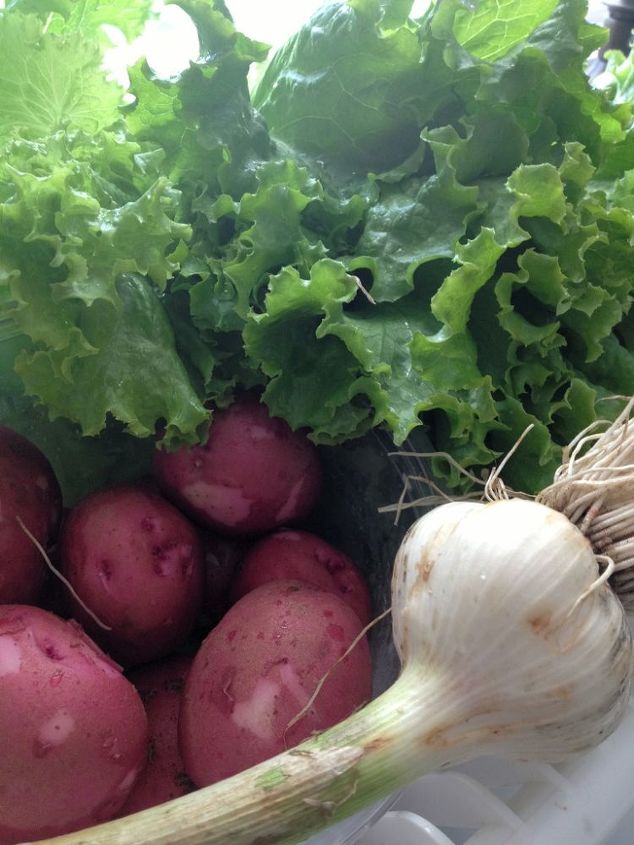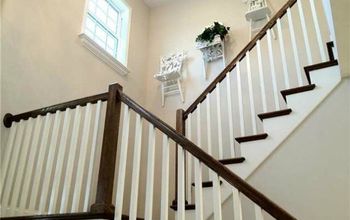What can be used to kill poison ivy on a large scale?

Related Discussions
GNATS - How to get rid of them?
Somehow my house and garden got tiny gnats that killed my fuchsia plant and fly everywhere. I have tried ALL the Web recommendations - soap and oil dishes, sand in th... See more
Marigolds growing! Should I pinch the buds?
My marigold plants are growing. I heard that pinching the buds until Autumn will allow them to grow without killing the plant. Is this true?
Growing garlic
Growing our first garlic, should we wait until the leaves are drying out before we pick it? Husband picked first one today along with our first potatoes.
How to keep mice out of your garden?
Hi everyone, I have mice in my garden destroying my vegetables and I have also noticed them in the barn and shed. Please can someone tell me how to prevent them from ... See more
What's the best flower/plant to grow in Texas?
I know that opinions vary, but what's your opinion?!I have great luck w Rosemary plants. Green all year long.
If I use salt to kill poison ivy-how far from other trees & plants?
If I use salt to kill poison ivy, how far away from trees and other plants do I need to stay so that I will not harm them?
What can I use to kill grass & weeds in myrtle without killing it?
I have a healthy bed of myrtle, but struggle to keep it grass and weed free



https://www.thespruce.com/tips-for-removing-poison-ivy-safely-2132618
My girlfriend and I use agricultural vinegar. Since you have trees involved, I would use regular or cleaning vingar. Cut everything back as much as possible then literally drown in vinegar. May take several applications but vinegar is cheap and environmentally friendly.
Poison ivy will not tolerate repeated tillage, cutting or mowing. Continually clipping the plant at or near ground level during the year for several years will eventually control poison ivy. Poison ivy shoots commonly encroach from wooded areas into newly established lawns. Herbicide use is not usually necessary since frequent mowing will eliminate the plant from the lawn. To prevent future encroachment into the lawn, poison ivy should be controlled in the adjacent wooded area.
Digging, or “grubbing out” poison ivy plants and roots can be used as a control method in small beds of landscape ornamentals. Waterproof gloves should always be worn when handling poison ivy plants (including the roots) to prevent contact with the poison.
Numerous herbicides are available for controlling poison ivy. Read all label directions before using any herbicide.
Because poison ivy has an extensive root system, multiple herbicide applications are usually necessary for effective control. Repeat applications should be made at the full-leaf stage of growth.
Glyphosate
Glyphosate is the active herbicidal ingredient in Roundup® (numerous other trade names for glyphosate are sold in retail outlets). Glyphosate is applied directly to poison ivy foliage. The best control is achieved when glyphosate is applied on a warm, sunny day when plants are actively growing. Glyphosate requires a one-hour rain-free period for maximum activity.
Glyphosate is a systemic herbicide and is translocated throughout plant leaves, stems and roots. The best control with glyphosate occurs when it is applied to poison ivy plants in the flower or fruit stage of growth. Applications at earlier stages of growth are not as effective; however, it may not always be practical to delay application until poison ivy is in the flower or fruit stage. Flowering generally occurs in the early summer months in Georgia.
Glyphosate can cause severe injury to other, desirable plants if the spray droplet particles contact the foliage or immature, green bark. Glyphosate should not be applied on windy days. Coarse sprays with large spray droplets rather than fine mist applications should be used to minimize drift.
Glyphosate may be used along fence rows, as a spot treatment in turfgrasses and pastures, and as a directed treatment in ornamentals and fruit and nut trees. In situations where poison ivy has grown into the canopy of large trees, up walls or other vertical structures, glyphosate can be used in combination with clipping the vine. In this method, the poison ivy vines are cut 2 to 3 feet above the soil surface. This will kill the portions of poison ivy above the cut. The remaining vine can be treated with concentrated glyphosate. A glyphosate concentrate of at least 41% can be used to treat the cut portion of this stem. It is recommend to paint the fresh cut with full strength glyphosate solution or a 50% dilution in water. This treatment should occur within 48 hours of cutting the glyphosate vine. If any regrowth is seen, it should be retreated with a 5% or 10% treatment solution.
Again, it is recommend to use at least a 41% glyphosate solution for treatment — approximately 6 to 12 oz of a 41% glyphosate solution to 1 gallon of water. Foliage, once fully expanded, should be sprayed until runoff occurs. If poison ivy is growing on trees, one should not be concerned if treatment is occurring on trees with mature, course brown bark of large trees, as no injury should occur to the tree. If inspection of the bark reveals green tissue, as is commonly found on deciduous trees that have been planted for one to two years, do not spray glyphosate on the bark of the tree.
2,4-D
2,4-D is either sold alone or in mixtures with herbicides such as MCPP, dicamba and triclopyr. 2,4-D is only marginally effective in controlling poison ivy. Products that contain 2,4-D in combination with dicamba and triclopyr will provide better poison ivy control than 2,4-D alone. However, dicamba (Banvel) or triclopyr (numerous trade names) will usually provide better control than the herbicides that contain 2,4-D as one of the components in the mixture. 2,4-D and 2,4-D mixtures are applied at the full leaf expansion growth stage of poison ivy. Repeat treatments will be needed to control new flushes of growth.
2,4-D and 2,4-D mixtures will not injure most turfgrasses and other grasses; however, numerous broadleaf plants (e.g., ornamentals, fruit trees, muscadines, grapes, cotton, tobacco and many vegetables) are highly sensitive to 2,4-D and spray drift can severely injure these plants. 2,4-D drift injury can be minimized by using coarse sprays and by staying several feet away from sensitive plants. 2,4-D products are formulated as either amine salts or esters. Ester formulations of 2,4-D are subject to vapor drift, especially at high air temperatures (> 80° F.). Volatilization or vapor drift of 2,4-D ester herbicides can injure sensitive plants at considerable distances from the original site of application. Ester formulations should not be used during the warm months of the year. Follow labeled directions for use of product on weedy growth or cut stump applications.
Triclopyr
Triclopyr is a highly effective postemergence herbicide used for controlling poison ivy and numerous other woody vines. This herbicide is sold under a wide variety of trade names for use in commercial agriculture, forestry and noncropland areas. Most of these products are not sold in lawn and garden stores and other retail outlets. However, Ortho® markets a brand name of triclopyr called Brush-B-Gon® in numerous retail outlets. For most homeowners, Brush-B-Gon ® is the preferred triclopyr formulation.
Similar to 2,4-D, triclopyr should be applied to poison ivy at the full leaf growth stage on a warm, sunny day. Triclopyr can also injure desirable broadleaf plants by spray droplet drift and use should be avoided on windy days. Follow labeled directions for use of product on actively growing weedy growth. Unlike glyphosate, triclopyr solutions should not be sprayed on the mature bark of trees. Triclopyr can be absorbed through the bark of some tree species and cause severe injury.
Triclopyr (Brush-B-Gon®) is recommended for use around homes, fences and in non-garden areas. It can be used near ornamentals, but do not spray when wind conditions favor spray drift.
Triclopyr is commonly used to prevent the regrowth of sprouts from tree stumps. When used in this fashion, undiluted triclopyr is “painted” on the sides and cut surface of the freshly cut tree stump. This “cut stump” method can be adapted to control poison ivy. Simply clip the poison ivy vine near the soil surface and “paint” the freshly cut surface with undiluted triclopyr. This method is useful for the control of small infestations of poison ivy in areas that are difficult or not practical to spray. Some regrowth of poison ivy will eventually occur and the “cut stump” method will need to be repeated.
bleach
boil hot water in kettle then pour on the base and it will kill the roots.
Clip the vines along the ground. Do not pull the vines from the trees until they are full dried, sometime this winter. If you are not adverse to chemicals, brush the vine stump with a brush killer, do this several times over several days. I like using salt and then cover with plastic, if the vine is thickenough. Personally, I would just bite the bullet and use the chemical, poison ivy is not to be messed with, I have scars all over my body from the rash I received trying to clear it from a neglected lot.
It you can...not sure if you rent or own your home...put up fence and house a goat. Goats love poison ivy.
3 cups white vinegar
1/2 cup table salt
1 tablespoon liquid detergent or soap (I use Dawn) for stick-to-itiveness.
Directions
Homemade weed killer: Add 1 cup of salt, 1 tablespoon of dish soap and 1 tablespoon of vinegar into a gallon of water for a DIY weed killer spray that can kill poison ivy over time. Cleaning vinegar is higher in acidity and you will need to many applications but this is safe to use.